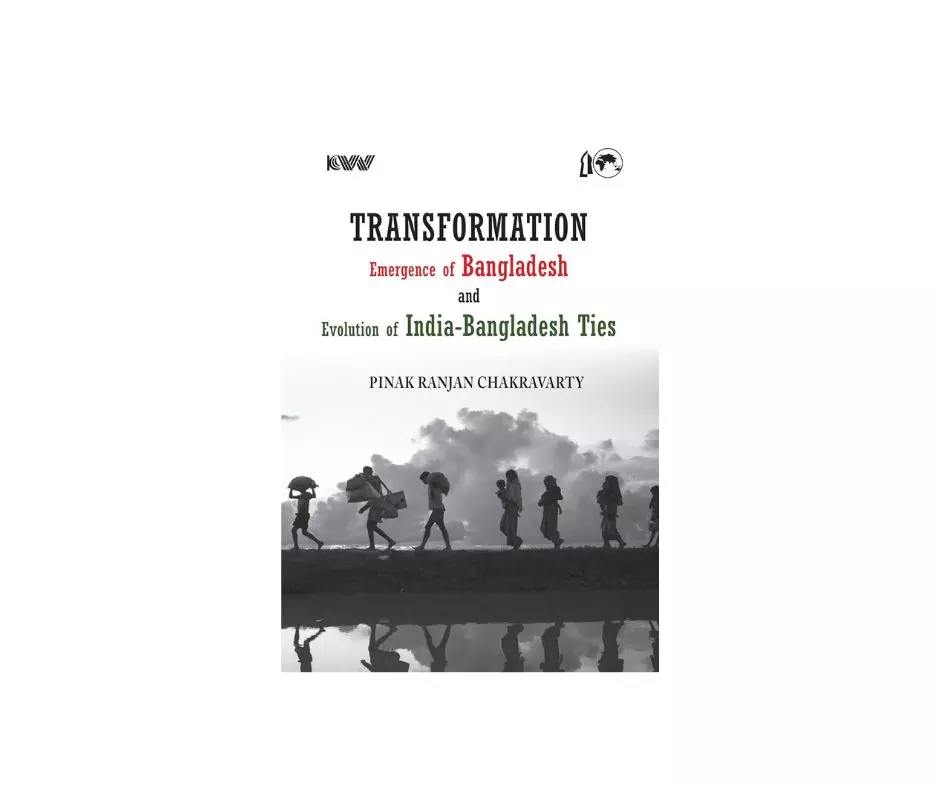Book Review | Not long ago, democracy was almost snuffed out in Dhaka

The book traces the history of Bengal from ancient times to the birth and progress of Bangladesh, as a new nation in the sub-continent, studying Mujib and Hasina’s role in nation building as well as the uncertain period of military coups and counter-coups and revolts in between.
Chakravarty talks of the curious case of how a ship MV Mecca arrived in Bangladesh in 2001, soon after the Taliban were ousted from Kandahar after bombardment by US forces, carrying Taliban and Al Qaeda fighters seeking refuge. This happened after Begum Zia came back to power leading a coalition of her Bangladesh Nationalist Party and two Islamist groupings — Jamaat-e-Islami and Islami Oiko Jot.
A few years later, came the sensational case of the Chittagong arms haul. The Bangladesh coast guard and local police at the deep-water Chittagong port caught people loading arms and ammunition at a jetty into waiting trucks. The jetty was controlled by the Minister for Industry Motiur Rehman Niazi, a Jamaat leader who had during the liberation war of 1971 helped the Pakistani Army in killing Bangladesi civilians.
The weapons cache with nearly 5,000 automatic rifles, machine guns and rocket launchers was meant for India’s proscribed ULFA, whose leader Poresh Barua was then “hiding” in Dhaka in broad daylight.
Things really got out of hand when the radical anti-US, Harkat-ul-Jihad-al-Islami Bangladesh carried out a grenade attack on Sheikh Hasina at a rally in August 2004 which when investigated pointed fingers at Prime Minister Begum Khaleda’s son Tarique Rehman who ran a parallel government from Dhaka’s ‘Hawa Bhaban’ as among the plotters. The grenades for the outrage came from Pakistan.
The terror nexus and the rising anarchy within Bangladesh alarmed not only ordinary Bangladeshis but foreign powers ranging from neighbour India to the US and European nations who had been victims of a number of terrorist incidents since 9/11. Chakravarty writes, “When I arrived in Dhaka (as India’s envoy), on January 7, 2007, Bangladesh was teetering on the brink of chaos.” A caretaker government backed by the army took over soon afterwords.
The caretaker regime reached out to India, which was watching the incidents unfold with some amount of alarm having witnessed many murderous coups in the neigbourhood before. The chief adviser in the caretaker regime — Dr Fakruddin Ahmed, a former World Bank economist and friend of then Prime Minister Manmohan Singh — as well as the army chief Gen. Moeen Uddin Ahmed were invited to Delhi.
While Dr Singh broke the ice with his old friend by saying “Excellency, we are both in our respective chairs by accident,” his colleague then minister for external affairs Pranab Mukherjee told Gen. Moeen that India wished to see: (a) Bangladesh return to democracy; and (b) an end to terrorism and safe harbour for Indian insurgent groups like the ULFA.
Soon afterwards, Chakravarty writes, “Moeen conveyed to me that they tried to arrest Paresh Barua but he fled into Myanmar. Whether this was the truth or not was difficult to judge. Baruah may have been told to leave Bangladesh.”
However, where India played a crucial role in bringing back democracy to Dhaka lay in nipping the so-called “minus two” formula which the caretaker government had promoted and almost got away with. The formula was simple — get rid of both the Awami League chieftain Sheikh Hasina and BNP’s Begum Zia and create a third political force to run Bangladesh.
The caretaker regime banned Hasina from returning from the US where she was visiting her son. When she returned defying the regime, she was arrested. At the same time the military-backed government tried to exile Khaleda off to Saudi Arabia and form a ‘King’s party’ of turncoat politicians.
India discreetly passed on the message that it did not approve of such shenanigans. “I expressed the view (to Gen. Moeen) … that the “minus two formula” was unlikely to succeed,” the author says in his book.
Possibly on advice from Mukherjee, Chakravarty told the general that “releasing the two Begums and allowing normal politics to resume” would be the best bet and help the caretaker regime go down in history as having taken the right path.
The rest, as they say, is history. The Begums were released and Sheikh Hasina stormed back to power on the crest of a massive people’s mandate in 2008.
He also talks of the China card, which Bangladesh and others in the sub-continent have played vis-a-vis India to extract “maximum benefits from both powers.” Bangladesh’s strategy seems to be one of “hedging”, at times signalling sensitivity to Indian concerns and at times strengthening ties with China.
For instance Bangladesh, mindful of Indian sensitivities, cancelled a proposed Chinese project to build a dual-use port at Sonadia Island which could have hosted Chinese spy ships. Instead, it gave the Chinese a contract to build a port at Payra “approachable through a 75 km long canal, a very unlikely place for a naval base.”
Though it would be too much of a stretch to believe that Bangladesh will fall into China’s orbit, Chakravarty in a chapter at the end (aptly named ‘Vexed Issues’), warns, “There is a rising clamour (within Bangladesh’s polity) for greater alignment with China. China’s sudden benevolence towards Bangladesh is not altruistic. It has geostrategic dimensions against India’s security interests.”
The writer is a senior journalist
Transformation: Emergence of Bangladesh and Evolution of India-Bangladesh Ties
By Pinak Ranjan Chakravarty
KW Publishers
pp. 233; Rs 1,880

